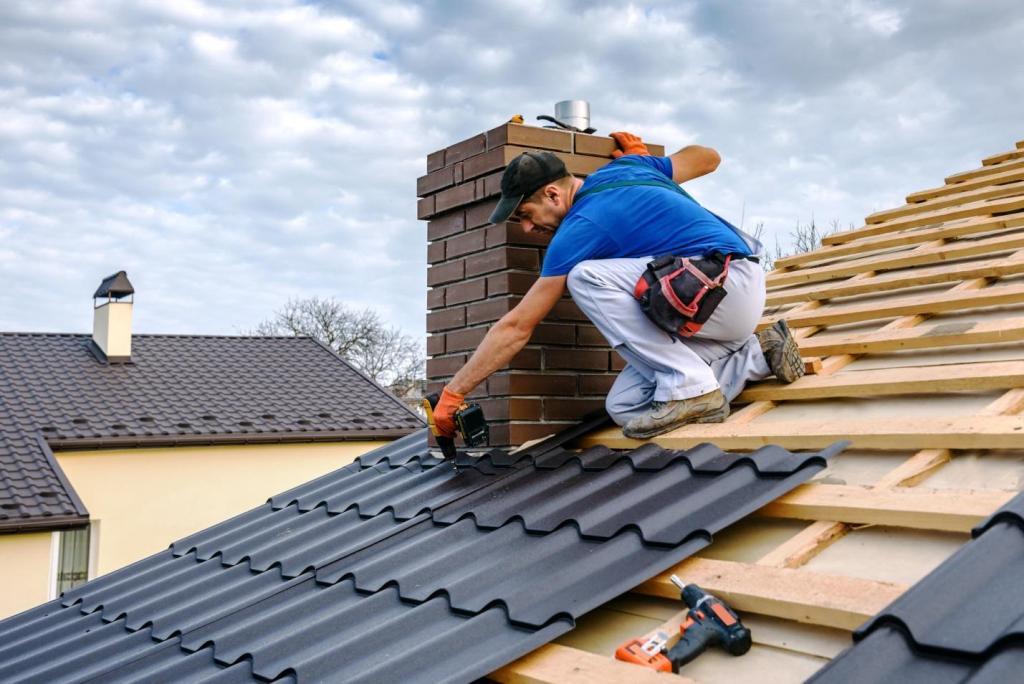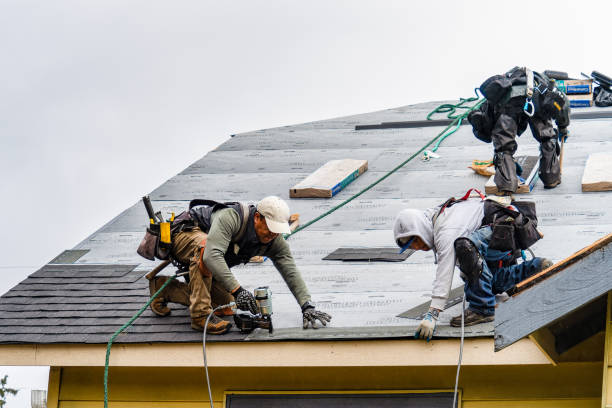A Comprehensive Guide to Effective Roofing Flat Roof Installation
The details of flat roof setup demand a careful method, beginning with a thorough understanding of various level roofing system types and the essential materials required for optimum efficiency. A successful installment hinges not only on the selection of materials but additionally on the preparation and implementation of each step included in the process.
Recognizing Flat Roof Covering Types
When considering level roofs, it is vital to recognize the various types offered, as each deals distinct advantages and drawbacks customized to certain demands. One of the most common types of level roofing systems include Built-Up Roof (BUR), Customized Asphalt, and Single-Ply membranes.
Built-Up Roof includes numerous layers of asphalt and gravel, offering superb toughness and weather condition resistance. It is especially helpful in areas prone to serious climate problems yet might call for more maintenance due to its complex building and construction.
Changed Bitumen is a prominent choice for its simplicity of setup and versatility. It often employs a self-adhesive or torch-applied technique, which can be helpful for fast repair services and long-term performance. Its life-span can be shorter compared to BUR.
Single-Ply membrane layers, consisting of Thermoplastic Olefin (TPO) and Ethylene Propylene Diene Monomer (EPDM), are identified for their lightweight nature and energy effectiveness. These materials are usually preferred for industrial structures due to their cost-effectiveness and ease of installment (Cleveland Roofing Specialists). Nonetheless, they might not provide the same degree of insulation as other options.
Each roof covering type calls for cautious consideration based upon climate, budget plan, and particular project demands.
Crucial Materials for Flat Roof
A range of necessary materials are crucial for the effective installation of level roof. The option of materials directly impacts toughness, performance, and general efficiency.
Among the main materials is the roof membrane layer, which can be built from numerous compounds such as thermoplastic polyolefin (TPO), ethylene propylene diene monomer (EPDM), or PVC. Each type supplies distinct advantages, consisting of UV resistance and flexibility, which are important for prolonged efficiency.
In addition to the membrane layer, insulation products play a significant function in energy effectiveness. Rigid foam boards or polyisocyanurate insulation are prominent choices, as they give exceptional thermal resistance and moisture management.
Furthermore, roof covering adhesives and sealers are important for ensuring a water tight installment. These items have to work with the selected membrane to prevent deterioration with time.
Preparing for Setup
Appropriate preparation is important for an effective flat roofing system setup, as it lays the foundation for a durable and efficient roof covering system. Begin by performing a complete inspection of the existing roofing structure.
Next, gather all needed tools and products, ensuring that they satisfy sector criteria. This includes water-proof membrane layers, insulation, flashing, and fasteners. Acquaint yourself with the manufacturer's requirements, as adherence to these standards is crucial for service warranty functions.
Additionally, guarantee that the workplace is clear of particles and obstructions to promote reliable and risk-free installation. Consider weather problems; stay clear of setup throughout hefty rainfall or extreme temperatures, which can affect product performance. Educate any passengers of the structure concerning the future work to ensure safety and security and reduce interruptions. By taking these preparatory steps, you can enhance the probability of an effective level roofing system installment that satisfies both architectural and aesthetic needs.
Step-by-Step Setup Refine
With the foundation developed through complete preparation, the next phase involves implementing the flat roof installation methodically. This step is critical for keeping the roof covering's integrity over time.
Following the vapor obstacle setup, put down insulation boards, ensuring they fit firmly with each other to reduce thermal bridging. Safeguard the insulation with proper fasteners based on the roofing system kind and local building ordinance. When the insulation is in place, it's More about the author time to use the roofing membrane layer. Relying on the chosen product-- such as TPO, EPDM, or customized bitumen-- mount the membrane layer according to the manufacturer's requirements.
Install flashing around boundaries, vents, and any type of roof infiltrations to improve waterproofing. After installment, conduct a detailed examination to identify any type of prospective problems before concluding the task, ensuring a reliable and robust level roof system.
Upkeep Tips for Long Life
Normal upkeep is vital to ensure the long life and performance of a level roofing system. Among the key jobs is to carry out routine evaluations a minimum of twice a year, preferably in springtime and fall. During these evaluations, search for indications of wear, such as blisters, fractures, or pooling water, which can suggest underlying issues.

Ensuring correct drainage is critical to avoid water accumulation. Check and clear rain gutters, downspouts, and scuppers to assure unhampered water flow. Additionally, examine seals around vents, skylights, and various other infiltrations for any kind of indicators of deterioration, using caulk or sealant as needed to preserve a watertight barrier.
Finally, think about specialist maintenance services my company every few years for detailed inspections and repairs. By sticking to these maintenance tips, you can substantially prolong the life of your go to this web-site flat roofing, ensuring it continues to be a trusted guard against the aspects.
Final Thought
Efficient flat roof covering setup requires a systematic method encompassing detailed inspections, material choice, and precise prep work. Complying with the outlined actions throughout the setup process guarantees the correct application of roof membranes and insulation while boosting waterproofing through efficient blinking installation. Executing routine upkeep techniques significantly adds to the durability of the roofing system. By following these guidelines, a resilient and trusted flat roof service can be attained, with the ability of enduring various ecological problems.
The intricacies of flat roof setup need a precise method, starting with a comprehensive understanding of numerous flat roofing system kinds and the essential materials needed for optimal performance.Proper prep work is important for a successful flat roofing installment, as it lays the foundation for a effective and resilient roof system. After setup, conduct a detailed assessment to identify any type of prospective issues before wrapping up the job, guaranteeing a dependable and durable level roof covering system.
